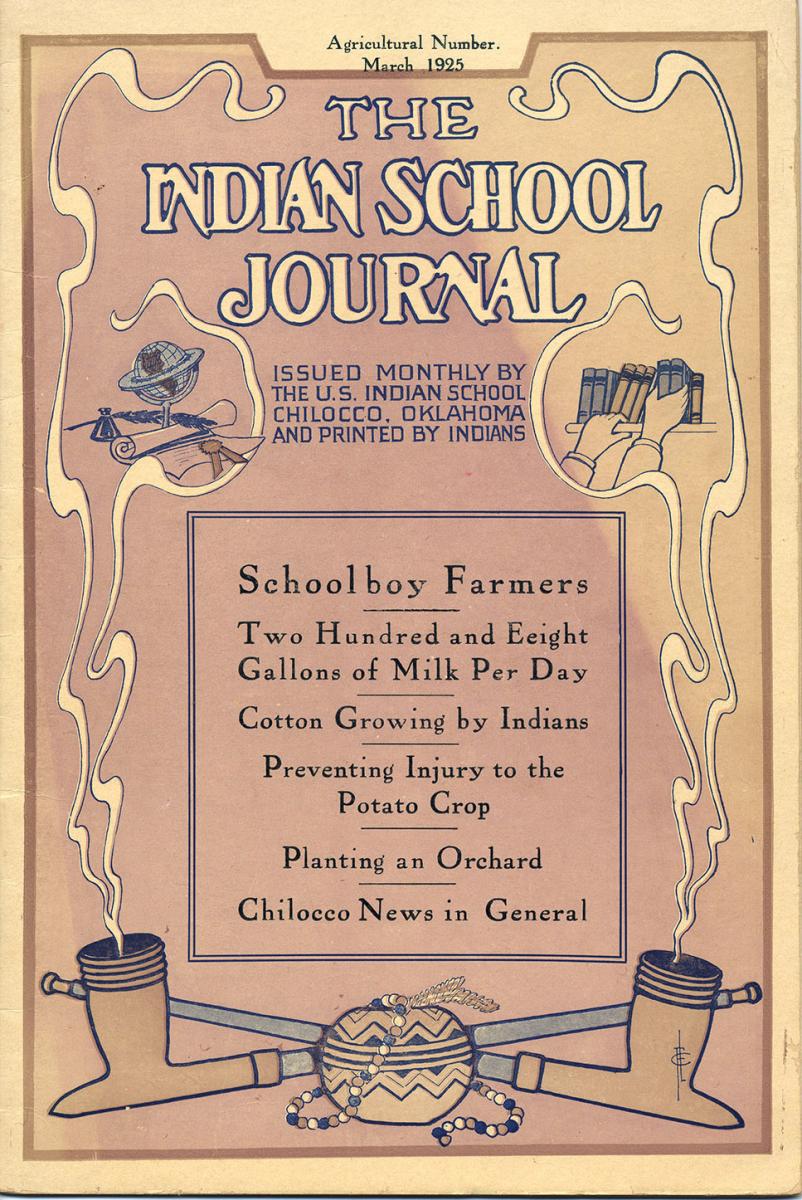
The Indian School Journal
Summer 2011, Vol. 43, No. 2 | Pieces of History
In the second half of the 19th century, federal Indian policy shifted from military confrontation to efforts to “civilize” and assimilate the native peoples into the general population. Indian schools, administered by the Office of Indian Affairs, were a significant part of this policy.
One of these schools—the Chilocco Indian School in Oklahoma—was in operation for nearly a century (1884–1980) and drew students from more than 40 tribes. Chilocco was a vocational boarding school that offered instruction to students in primary grades through high school. From its beginning in one building, it grew to be one of the largest schools for Indians in the nation.
A school pamphlet describing the 1925–1926 course of study proclaimed that “Chilocco offers unlimited changes for training and development in [agriculture].” The school also offered boys vocational training in printing, carpentry, auto mechanics, engineering, physical education, and coaching. Girls were offered courses in home economics and nursing. In later years, the school offered plumbing, electrical work, welding, mechanics, food services, and office education.
Students produced the Indian School Journal in the school’s print shop. The journal was published weekly from 1904 to 1906 and monthly from 1906 to 1926.
Educational and health features, poems, and inspirational stories mixed with school news in general, such as the results of sports competitions, retirement of staff, special guests at the school, and school plays. The journal included a number of photographs of students, faculty, school buildings, Indian houses, and artifacts.
Records relating to the Chilocco Indian School are available online at Archives.gov and at the National Archives at Fort Worth, Texas, where you can find a wealth of resources for research in Native American settlement in Indian Territory.
